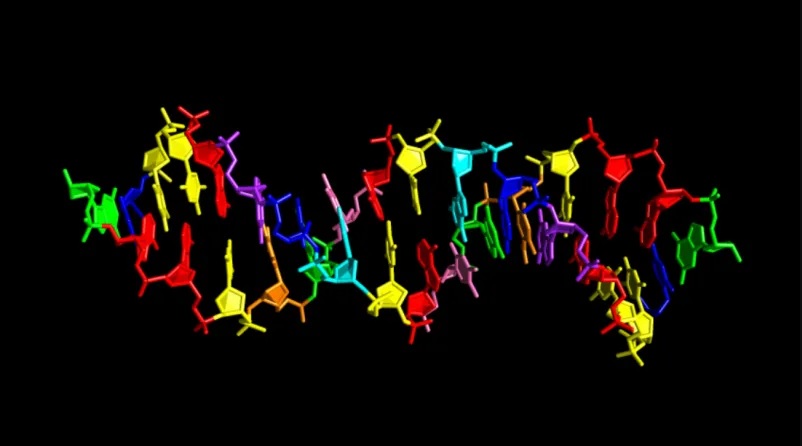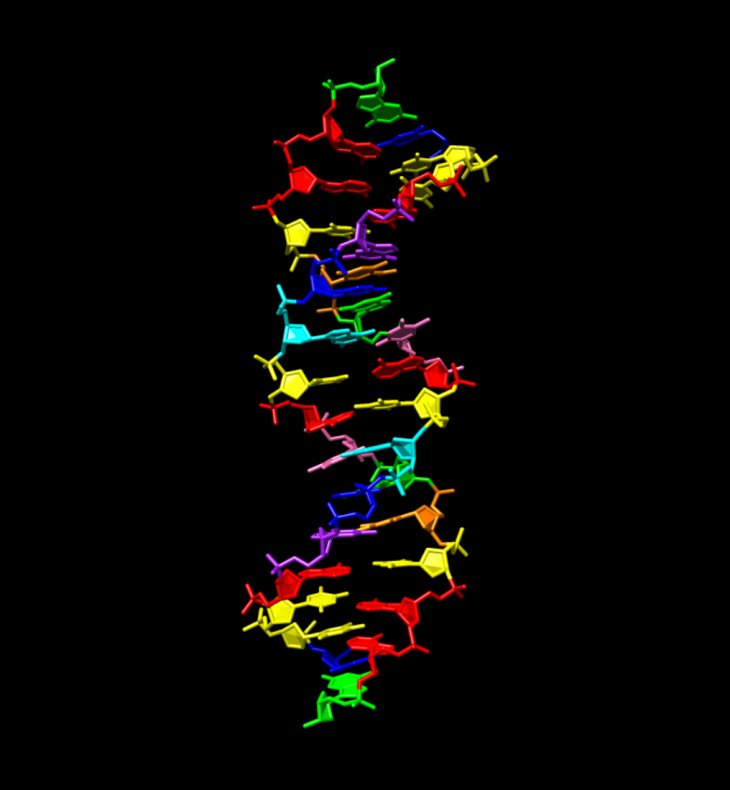Alien Life Forms Might Be Made Of This 8-Letter DNA
Aadhya Khatri - Feb 24, 2019

NASA highly regards this finding on how 8 nucleobases can create DNA of life forms that are not from Earth.
- Russia Will Build A Lunar Space Station With China Because It's Done With NASA
- NASA Reveals 20 Most Stunning Earth Images Taken From The ISS
- Indian-Origin NASA Researcher Discovers Jupiter Moon Europa Glows In The Dark
Regular DNA is made up of the 4 nucleobases, which are A, C, G, and T. However, in a newly-created system called the “hachimoji”, this number is doubled and could serve as the materials to create the DNA of life forms not from Earth.
In a research paper on Science, the system, a.k.a “hachimoji” meaning “eight letters” in Japanese, DNAs made from the typical 4 bases and another 4 ones are denser than those we normally know. According to Steven Benner, the lead scientist of this project, the dynamical systems created by the 8 bases are capable of self-replicating.

However, hachimoji on its own is not a life form. It is another system that can help with the process of self-replication. In our world, or at least the world we know of, this job belongs to RNA and DNA, but it is possible that other systems are able to do this too. For the time being, this is something astrobiologists are keen to know more about because it is a prime example of how life can be created and developed without going through the same way things are on Earth.
The scientists of this project stated that it was not to say that a system like “hachimoji” did exist outside of our world.
For a typical system of DNA and RNA, the four nucleobases work as materials to store and pass on the genetic information. In DNA, the 4 bases are A, C, G, and T, while in RNA, U is used instead of the last base. They are essential to form amino acids, which in turn, create proteins.

Prior to this research, scientists have managed to increase the total number of nucleobases to 6 but this is the first time they made a breakthrough with 8 bases.
In addition to the regular A, C, G, and T, the four new letters are P, B, Z, and S. The former two resemble purine while the latter two work like pyrimidine. In a lab environment, the new system can function just like the regular 4-letter one. Another feature that makes the hachimoji stands out is that it fulfills Erwin Schrödinger’s standards to be qualified for a Darwinian evolution.
In a press release of the Foundation for Applied Molecular Evolution, it is confirmed that hachimoji DNA is capable of everything a typical DNA can do. They can project how they form a pair. Hachimoji RNA can be created from the hachimoji DNA, which in turn, forms protein.
Impressed by the study, Lori Glaze, scientist and Acting Director of NASA's Science Mission Directorate’s Planetary Science Division, said that this finding would help NASA came up with the needed tools and tests to find out about life forms, a goal they are putting much effort in.

To achieve this target, NASA decided to create something that does not exist on Earth as a way to form an idea of what they are expecting in other worlds and the team behind the hachimoji system supplied them with exactly what they need, a system made out of eight bases that is capable of self-replicating.
Floyd Romesberg, an American biotechnologist, biochemist, and geneticist at Scripps Research in San Diego, who is also one of the scientists discovering the 6-base system, said that the hachimoji is of great importance as we used to think that the DNA was the sole structure capable of performing its functions. A prime example would be the fact that scientists could only be certain of the predictability of stable sequences produced from DNA. Now, with the capability of hachimoji proven, scientists believed that there were ways other than the natural 4-letter system to do the same thing.
He also shared that the hachimoji system is capable of allowing scientists to control the arrangement of nucleotides. The fact that this system comprised of 8 bases means that it is more specific than the regular 4-letter system.
However, if the hachimoji system cannot be programmed or predicted, all of these above benefits will be lost.
Apart from the astrobiological value, the hachimoji system can be useful on Earth as much as in space. According to the authors, it can be used to enhance existing tools for diagnosis or for detecting threats in the environment and also new drugs.
Featured Stories

Features - Jul 01, 2025
What Are The Fastest Passenger Vehicles Ever Created?

Features - Jun 25, 2025
Japan Hydrogen Breakthrough: Scientists Crack the Clean Energy Code with...

ICT News - Jun 25, 2025
AI Intimidation Tactics: CEOs Turn Flawed Technology Into Employee Fear Machine

Review - Jun 25, 2025
Windows 11 Problems: Is Microsoft's "Best" OS Actually Getting Worse?

Features - Jun 22, 2025
Telegram Founder Pavel Durov Plans to Split $14 Billion Fortune Among 106 Children

ICT News - Jun 22, 2025
Neuralink Telepathy Chip Enables Quadriplegic Rob Greiner to Control Games with...

Features - Jun 21, 2025
This Over $100 Bottle Has Nothing But Fresh Air Inside

Features - Jun 18, 2025
Best Mobile VPN Apps for Gaming 2025: Complete Guide

Features - Jun 18, 2025
A Math Formula Tells Us How Long Everything Will Live

Features - Jun 16, 2025
Comments
Sort by Newest | Popular